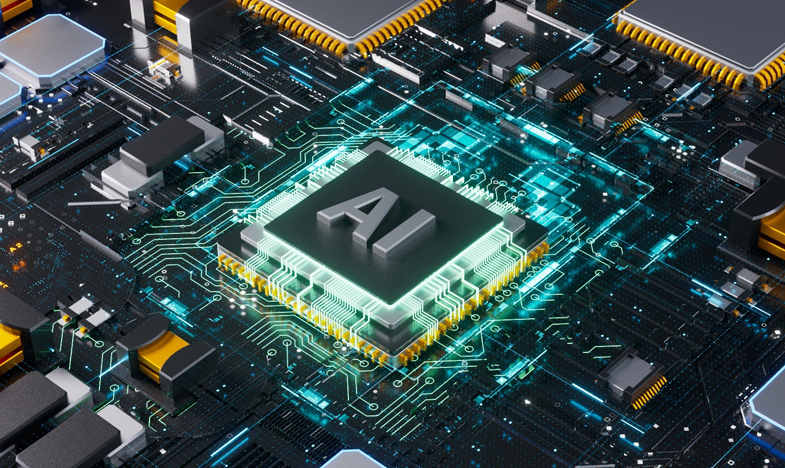
How can companies use artificial intelligence, Internet of Things, augmented reality, virtual realit
Release Time:
2021-04-26
Companies are implementing modern technologies such as artificial intelligence (AI), Internet of Things (IoT), augmented reality (AR), virtual reality (VR), blockchain and big data to improve customer retention and experience to prevent losing out to competitors.The business world is very competitiv
Companies are implementing modern technologies such as artificial intelligence (AI), Internet of Things (IoT), augmented reality (AR), virtual reality (VR), blockchain and big data to improve customer retention and experience to prevent losing out to competitors.
The business world is very competitive today. Every day, we read about startups in the news. In this fierce competition situation, enterprises are applying various strategies to gain competitive advantages over other enterprises. Whatever strategy they adopt, the core focus of all these companies will be to attract new customers and retain existing ones. In fact, retaining existing customers is more valuable than attracting new ones. This is because retaining customers is cost effective and provides higher profits. According to this infographic, increasing retention by 5% can increase profits from 25% to 95%. As a result, businesses in today's digital age are embracing various customer retention techniques as part of their strategies to retain more customers and generate more revenue.
An important pillar of customer retention
Customer success: This is to ensure that the end customer can achieve or get what they want.
Customer support: From the initial interaction to the use of a product or service, a business should provide all kinds of support to its customers. This includes ensuring quick and appropriate answers to customers' questions, assisting them in using products or services, and improving relationships through increased engagement.
Personalization: One size fits all is no longer an option for businesses. Therefore, they need to personalize their products and services to their customers. Whether it's giving advice, sending out ads, or communicating for any support, everything needs to be personalized to the customer's preferences and needs.
After sales marketing: Once the sale is completed, the enterprise should not terminate the service to the customer. As long as customers are using their products or services, companies should continue to help customers and listen to their voices. Businesses can also create a loyalty program to provide rewards and benefits to customers who are loyal to them.
Five techniques to ensure customer retention
There are a variety of digital technologies that can help businesses retain customers, and these technologies can provide a competitive advantage:
1. Understanding customer behavior through AI
Ai-based chatbots can understand human language and respond to customer queries. They provide 24/7 service and reduce turnaround time. The AI system can also analyze customers' emotions to detect their mood. Chatbots can analyze and detect specific words in text to analyze emotions. The robot can use the camera to detect facial expressions and analyze emotions based on these expressions. Then, the AI system can respond to the customer and interact with them according to their mood. For example, if the customer is sad for some reason, the robot can sing or dance to ease their emotions. Companies can also integrate AI into their daily operations to provide personalized advice to customers. Machine learning algorithms can categorize customers based on their preferences, location and demographics. Based on categories, the AI system can provide personalized recommendations for customers.
2. Internet of Things brings more convenience to customers
Iot devices collect real-time information that companies can use to provide enhanced services to customers, such as beacons that collect information about what customers pull off the shelves. This information can help businesses deliver real-time personalized ads and recommendations to customers on nearby LED screens or smartphones. Suppose a customer picks up shampoo from the shelf, the beacon can be connected to his or her smartphone, and the automated system can then send an AD about the conditioner to the customer's smartphone. This increases engagement, and it provides a personalized experience for customers. Smart devices like smart trolleys could make retail stores smarter by eliminating the need to queue for payment. Smart trolleys with embedded cameras can detect all of a customer's purchases, then they can automatically calculate the final bill amount, and the customer can pay the bill digitally using the smart trolleys. The convenience keeps customers coming back.
3. Immerse customers in the future through virtual and augmented reality
Immersing customers in virtual and semi-virtual environments is an effective way to engage them. With AR and VR, people can learn about a service or product before they even buy it from a company. They can also provide hands-on experiences for customers. For example, clothing retailers can use AR and VR to create avatars of customers wearing the goods they buy. This is very good for e-commerce business. Some people don't want to shop online because they can't try on the things they want to buy. With augmented and virtual reality, e-commerce companies can let consumers try everything before they buy, just as they would at a retail store. Introducing participatory assistance in using a service or product can help retain customers. What could be more engaging than having a human assistant available every time a client needs help? If customers get stuck using any product or service, AR and VR can immerse them. Augmented reality has the potential to take product manuals to a whole new level. Product manuals are usually boring except for a few pictures, but AR can bring a sense of engagement to those boring manuals. Organizations can use tag-based AR to create an engaging product manual. They can point to every part of the product and display information about its capabilities via text, audio and even video.
4. Increasing trust through blockchain
Trust is crucial to retaining customers. Blockchain can bring transparency to production and distribution channels to enhance brand trust with customers. Companies can upload production details such as raw materials and quantities of raw materials to a decentralized ledger. Customers can access the ledger to see how products are manufactured, assembled and distributed. Blockchain can also enable secure online transactions. Every record of an online transaction, along with billing details, can be uploaded to a blockchain platform. Since the details uploaded to the blockchain network cannot be changed, any accounting disputes between the organization and its customers can be avoided.
5. Provide customized products and services through big data analysis
Businesses need to give customers what they want. This includes not only products and services, but also offers. But sometimes a company may not be able to cope with a sudden increase or decrease in demand for a particular product, which can lead to shortages and customers not being able to find the product they want. And if a business cannot provide its loyal customers with the products they want, it risks losing them. To avoid any such situation, organizations can use big data analytics to improve the demand supply cycle. Big data analytics can analyze large amounts of historical data to understand what happened in the past and the reasons behind it, and then it can analyze current data to understand market trends and what is happening now. Then, based on this information, big data analytics can predict the future trends of the market and the demand for specific products.
All of the above technologies have the potential to increase customer retention on their own, but when combined, they can ensure that companies can easily retain the majority of their customers, for example, artificial intelligence can automate operations, the Internet of Things can bring connectivity, and blockchain can provide security. So when blockchain, the Internet of Things and artificial intelligence converge, they can form a secure, connected and automated platform to revolutionize the way we work. Therefore, businesses should look to incorporate various customer retention techniques to expand their customer base. (Compile iothome)
Reprinted in the House of Things

Guangdong Joinet IOT Technology Co.,Ltd
Manufacturing Base:
Joinet Technology Park,No. 168 Tanlong North Road,Tanzhou Town,Zhongshan City,Guangdong Province,China
Pre Sales Hotline:19966308713 13823973022
Switchboard:0760-8663 0003 (transferred) 523
Pre Sales Email:sw@znaiot.com


Contact Us:
Looking forward to your call anytime










































